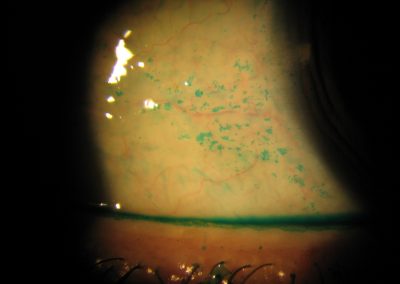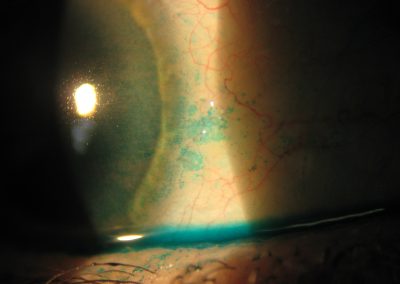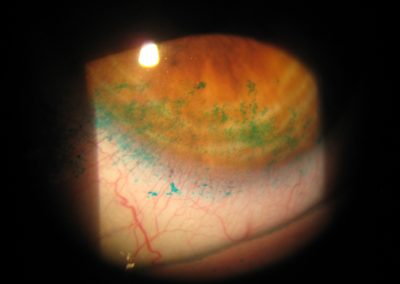Prevalence and Symptoms
According to the American Academy of Ophthalmology, an estimated 3.2 million women over age 50 and 1.68 million men over age 50 suffer from DES in the United States. The prevalence of DES increases with age, and affects more women than men due to hormonal shifts during or after menopause. Depending on the person, symptoms of dry eye can vary between extreme light sensitivity, eye pain, unexpected tearing, a dull achy feeling around the eyes, a sensation of “grittiness” or sand in the eyes, redness of the eyes, decreased or cloudy vision, fluctuating vision (especially in between blinks), or even no symptoms at all. If you have any of these symptoms and your vision is fluctuating, it’s time to consult our physicians for dry eye.
Diagnosis
There are 2 types of dry eye: aqueous-deficiency and evaporative dry eye. Aqueous-deficiency related dry eye is caused by underproduction of normal tears. Evaporative dry eye is excessive moisture loss from the eye’s surface in the presence of normal tear function, causes of which include poor eyelid hygiene with subsequent infection, or rosacea affecting the eyelid margin. Distinguishing the type of dry eye in a patient is important because treatments for the two types of dry eye are different. The following tests for dry eye are crucial to make this distinction:
- Schirmer tear test: this test measures the amount of tears produced from the eye within a 5 minute period. The normal minimum score in an anesthetized eye is 10mm.
- Lissamine green staining: lissamine is a green-colored eyedrop that stains dry spots on one’s cornea (the clear, front-most part of the eye) or conjunctiva (the transparent tissue layer covering the “whites” of the eyes). The amount of staining with lissamine green determines the severity of DES, which in turn determines the treatment protocol. See the clinical photographs below.
Clinical pictures of dry eyes with lissamine green staining on the conjunctiva and the cornea. The green stains indicate areas of surface damage on the eye resulting from chronic dry eyes.
- Fluorescein staining: Fluorescein is a yellow-colored eyedrop that can stain dry spots on one’s cornea. The cornea stains with fluorescein at the moderate to severe stages of DES.
- Eyelid examination: evaporative dry eye can be caused by blepharitis or meibomian gland dysfunction (MGD). Blepharitis is a chronic eyelid infection accompanied by inflammation, usually caused by bacteria or other micro-organisms living around the eyelids. MGD is characterized by chronic inflammation and plugging of the oil glands within the eyelid, usually caused by poor eyelid hygiene or ocular rosacea. Treatment of evaporative dry eye targets blepharitis and MGD.
Treatment
Treatment of DES depends on the type of dry eye and its originating cause. Accurate diagnosis and prompt treatment for dry eye syndrome requires consultation with an eye physician in our clinic.
For more extensive medical information on dry eye disease, please visit:
Request an Appointment



